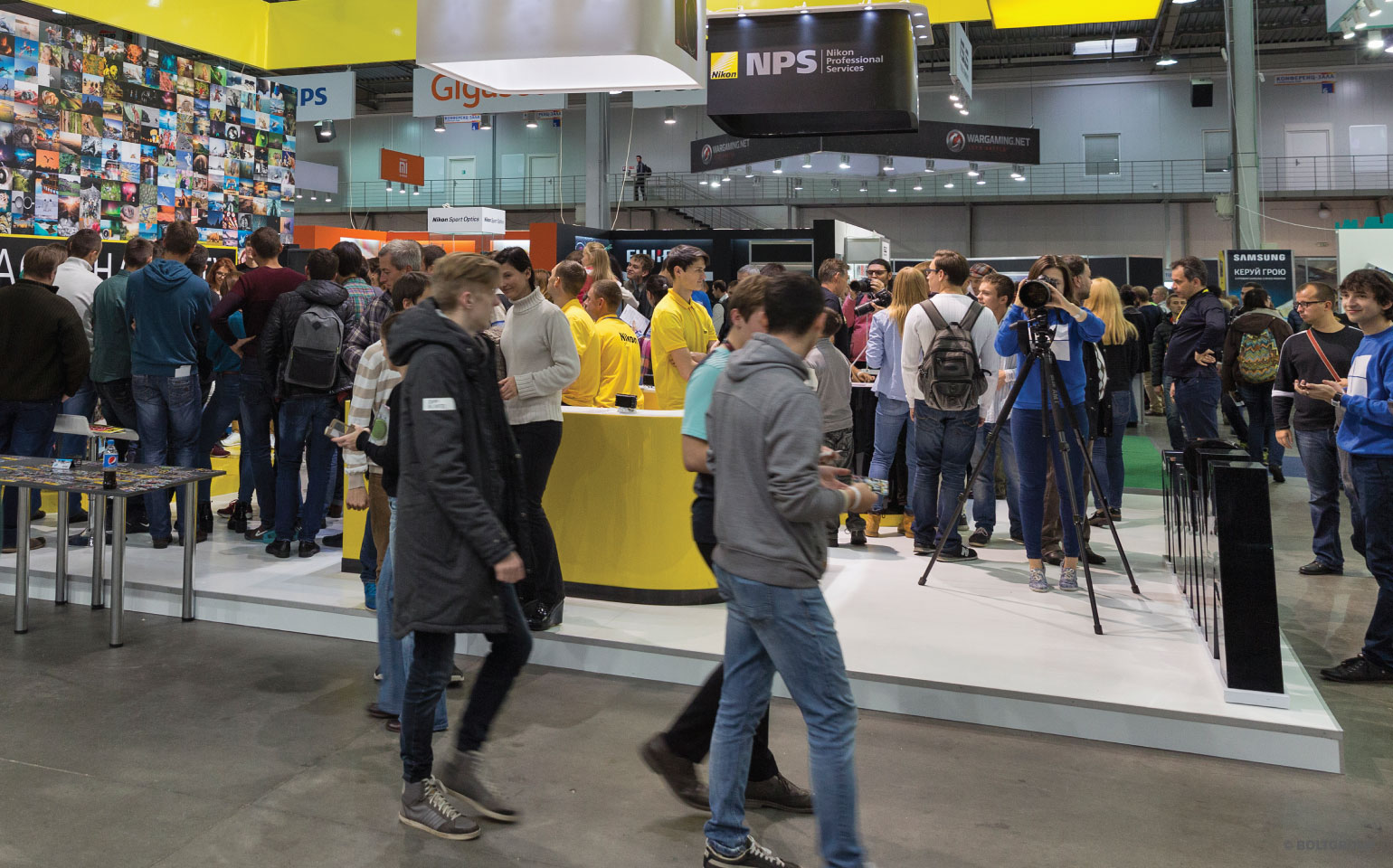As this year comes to a close and we all turn towards 2018, trade show season is gearing up. Have you considered—in the exhibit hall or at the conference center—all key aspects of how your brand will be represented? Your event marketing objectives of course should drive the design of your show exhibit and campaign. Will you focus on generating leads, are you aiming to raise brand awareness? Fundamentally, the goal at each event is to create a series of meaningful moments for your constituents. These moments are the start of lasting loyalty between your brand and your customers. So where are the best opportunities to help these moments happen?
The first sensory impression is VISUAL. What does your brand say to the eye?
The physical design of your space makes an impression that sums up your brand experience. Statistics tell us that you may have less than three seconds to capture the attention and interest of a passerby on the trade show floor, so making an immediate impression is critical. Your tools may include backdrop, signage, merchandising, video component, or even the chair you offer visitors. No detail is too small to consider. Do you need to replace the sofa that’s seen better days? Every facet of the experience is a reflection of your brand and will either support or detract from what you want to communicate.
Is your MESSAGING on target?
Your constituents likely fall into different groups. Each will have its own personas and motivators so the way you engage with each will differ. Review your initial trade show concepts. Does the voice and tone line up with your brand personality? Audit your materials to ensure that all messaging is crafted for the correct audience at each venue. Not every printed piece can serve all purposes or speak to all audiences, so consider carefully who you want to reach and make sure your show team is equipped with the right targeted literature. Appropriate, engaging messaging in pre-show promotion and post-show follow-up can generate the key connection they remember. If you speak to each group’s specific needs and tell them what you can offer that matters to them, you’ll have a better chance of meaningfully engaging them.
Take a step back from your trade show site and consider what visitors see, read, and hear from 50 feet away, from 15 feet away, and right up close and personal. Each concentric circle should draw them in with engaging—and brand appropriate—visual and verbal content. If you do it right, your show presence will pull people in like a magnet, making the job of your sales staff much easier.
Do the PEOPLE representing your brand know the power of their role?
Once your visual and verbal strategies have caught the attention of attendees, it’s up to your people to deliver your brand. Your show booth staff are the true ambassadors of your brand. They are living, breathing examples of your brand personality to visitors. As such, consider carefully who you send to do this job. Who is the true voice of the brand?
As company president, you are not your brand, nor do you alone speak for it. Your brand is its own entity, defined by your customers and consumers, and built by the collective perceptions, expectations, and experiences they’ve had with your brand. A brand may look nothing like the buttoned-up executive leading the company.
So make sure you are fully using each aspect of your presence to dictate how your brand will relate at the event. Each exchange with your constituents counts, whether at the booth, on a retail floor, or in a showroom. Intentionally designing those interactions strengthens and gives meaning to the brand. Your trade show presence needs to mirror your rich brand personality. Your marketing team will take their cues from this. If your focus is on the total brand experience and your authentic brand personality shines through, your staff can create an emotional connection with visitors that often lasts far beyond the exhibition hall.
